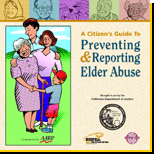The following information was copied verbatim from the AHCPR Guidelines, which is consistent with the recommendations of the National Pressure Ulcer Advisory Panel (NPUAP) Consensus Development Conference:
Stage 1
Nonblanchable erythema of intact skin, the heralding lesion of skin ulceration. In individuals with darker skin, discoloration of the skin, warmth, edema, induration, or hardness may also be indicators.
A Stage I pressure ulcer is an observable pressure related alteration of intact skin whose indicators as compared to the adjacent or opposite area on the body may include changes in one or more of the following: skin temperature (warmth or coolness), tissue consistency (firm or boggy feel) and/or sensation (pain, itching).
The ulcer appears as a defined area of persistent redness in lightly pigmented skin, whereas in darker skin tones, the ulcer may appear with persistent red, blue, or purple hues.
Stage 2
Partial thickness skin loss involving epidermis, dermis, or both. The ulcer is superficial and presents clinically as an abrasion, blister, or shallow crater.
Stage 3
Full thickness skin loss involving damage to or necrosis of subcutaneous tissue that may extend down to, but not through, underlying fascia. The ulcer presents clinically as a deep crater with or without undermining of adjacent tissue.
Stage 4
Full thickness skin loss with extensive destruction, tissue necrosis, or damage to muscle, bone, or supporting structures (e.g., tendon, joint capsule). Undermining and sinus tracts also may be associated with Stage 4 pressure ulcers.
http://www.medicaledu.com/staging.htm
At the time of his death, according to medical records, Mr. Thelsey L. Fuller suffered with all four stages of pressure ulcers over different areas of his body.












No comments:
Post a Comment
All comments are reviewed before posting.